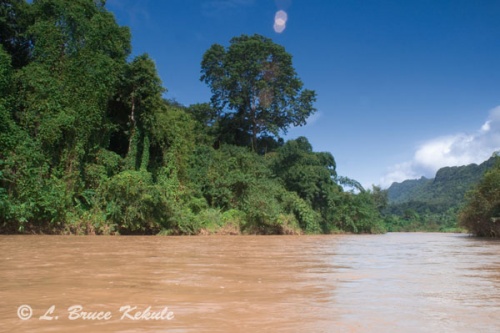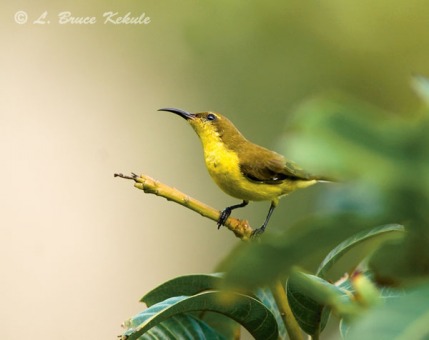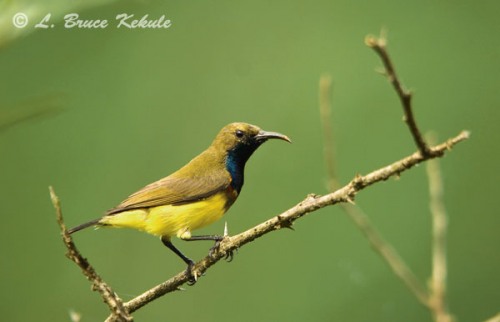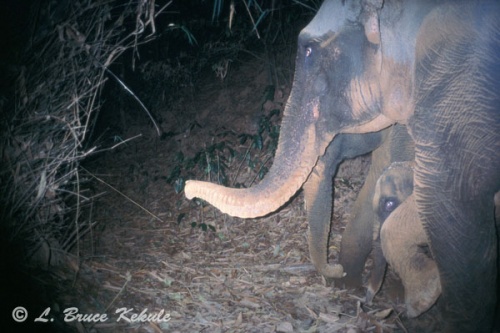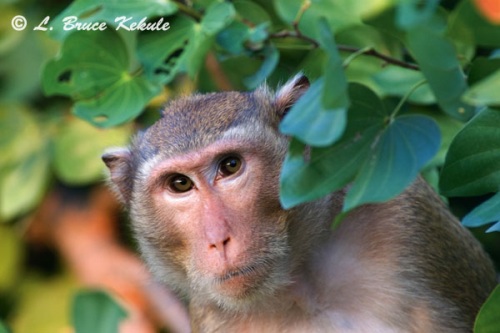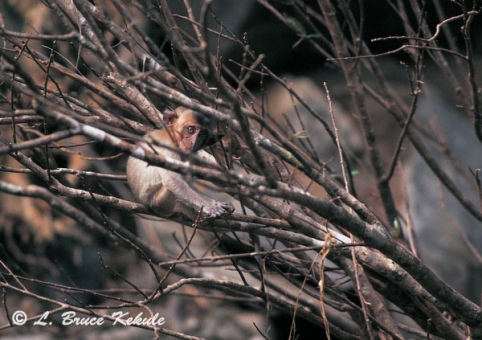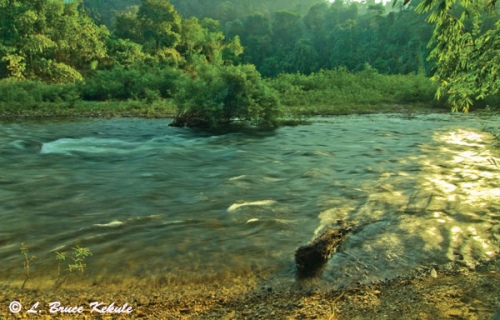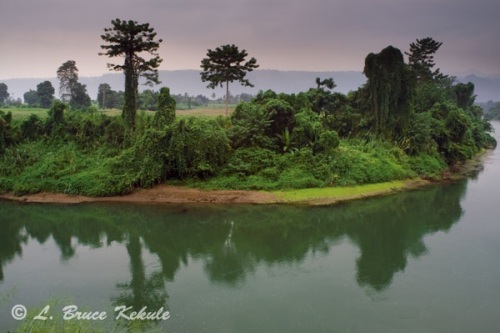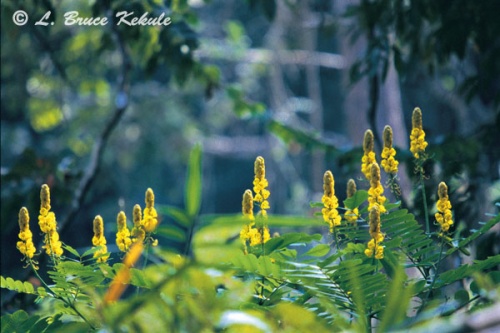Sai Yok National Park: Home of the Regal Crab and Kitti’s Hog-nosed Bat
Amazing biodiversity in jeopardy made famous by the ‘Death Railway’ in World War II
On December 8, 1941, the same day of the Pearl Harbor attack in Hawaii (Dec. 7 in the U.S.), the Japanese Army invaded Thailand with thousands of troops and settled in. Sometime in 1942, a decision was made to build a railway from Bangkok to Burma and beyond through the thick malaria and tiger infested jungles in Kanchanaburi province using allied and Asian prisoners-of-war as construction labor.
Regal crab by the Mae Nam Noi river in Sai Yok National Park
Thousands died under the harsh and sometimes brutal conditions. Remnants of this rail line remain today in Sai Yok National Park. Numerous monuments to the men who lost their lives have been erected in Kanchanaburi, and the main cemetery in town is close to the rail line and the famous ‘Bridge over the River Kwai’ (Khwae).
Apart from its popular waterfalls and river trips, this national park is not that well known. Situated in Kanchanaburi province, along Thailand’s western border with Myanmar, its interior is truly a magnificent wildlife paradise encompassing exactly 500 square kilometers. However, it may not remain so for long, as poaching and forest encroachment continues to be a problem for the Department of National Parks (DNP).
Kitti’s Hog-nosed bat in a limestone cave by the Mae Nam Noi
The headquarters of the protected area is at Sai Yok Yai (big Sai Yok) waterfall, about one hundred kilometers upstream from Kanchanaburi town on the Khwae Noi River. This site is visited by scores of local and foreign tourists every year that come to see the waterfall and the smaller one at Sai Yok Noi, both of which are only a short distance off Highway 323 going north. Activities on the river include swimming, rafting, boating and picnicking.
Cave-dwelling Nectar-eating bats in a limestone cave by the Mae Nam Noi
Deep inside the park, however, one of the world’s smallest mammals, Kitti’s hog-nosed bat Craseonycteris thonglongyai discovered by the late Thai zoologist Kitti Thonglongya, is found in limestone caves along the remote Mae Nam Noi and Khwae Noi rivers. Previously, it was thought to be endemic but now this creature has been found in other isolated pockets elsewhere in Kanchanaburi, and is also thought to survive in neighboring Myanmar.
Short-nosed fruit bats
This flying mammal weighs barely two grams. Aptly, it has been called the ‘bumblebee bat’ and has an average wingspan of just three inches. It uses sonar to forage for insects during short periods each night — about 30 minutes — in the evening and again for 20 minutes just before dawn. Numbers are few and is listed by IUCN as vulnerable. At one time, this remarkable little mammal was in fact one of the world’s twelve most endangered animals. Constant foraging by locals for bat dung (guano) and catching bats with mist-nets is a serious problem that needs to be addressed.
Sunset over Sai Yok National Park
Also found in this same area is the regal crab or queen crab Thaiputsa sirikit discovered in 1983 and named in honor of Her Majesty Queen Sirikit of Thailand. This crustacean is known locally as the ‘three-colored crab’. With their white body, purple stripe down the back, and red legs, the regal crab is truly a pretty sight.
Mae Nam Choan tributary in Sai Yok
They live like most crab, in holes, which they dig along the banks of the river. They come out at night to forage for food eating mainly composted leaves. Now few in number, this is yet another species that is seriously endangered and needs complete protection.
Olive-back sunbird female by the river
Fortunately, the locals in the area have stopped eating them since they were named after the Queen. They are now protecting the few crabs that are left. This is a case of true conservation and hopefully, the species will survive into the future.
Olive-back sunbird male close by
Elephant, gaur, tiger and leopard, plus many other species, still survive in the interior of the park, but all wild animals are dwindling. Sambar, serow, muntjac, tapir and wild pig are also found and constitute the main prey species for the big cats. Asian black bear, Malayan sun bear, clouded leopard, golden cat and marble cat plus many smaller species like civet, porcupine, gibbon and monkey live here but like all the rest, they too are threatened. Birds, reptiles, insects flourish as well as plant life.
Mae Nam Noi river in Sai Yok
Like most national parks in Thailand, Sai Yok is a target for poaching and logging which seem to go hand in hand. Most of the wildlife is hunted for trophies and meat, primarily during the dry season when there is good road access. It is sometimes common to see poachers in the park, cruising along the roads in vehicles or on motorcycles. Illegal logging has been carried out along the Khwae Noi, Mae Nam Noi and Mae Nam Lo rivers. This has seriously eroded their banks.
Mae Nam Lo river in Sai Yok
Other forms of encroachment include cattle and buffalo corrals that are set up deep in the forest where fodder is easily available. The chance of ‘foot and mouth’ disease being passed on to wild ungulates is real. Fruit orchards pop up in areas along the river inhibited by wild creatures and seem to thrive. Constant illegal activities are affecting the status of the park’s wildlife and watershed integrity.
Leopard camera trapped in the interior of Sai Yok
The forests in Sai Yok are mostly tropical broad-leaved evergreen with much bamboo and mixed deciduous woodlands in the foothills. The highest peak, Khao Khewa, at 1,327 meters above sea level, is part of the Tenasserim Range that runs through the park from north to south. The area was formerly logged so the park has many thin patches where big trees were felled. However, heavy brush continues to grow back strongly in these areas.
Elephants camera trapped by the river
During the height of the rainy season, between July and October, Sai Yok’s wildlife roam and feed fairly safely due to the rough weather and almost impenetrable terrain. The rivers and streams in the park become raging torrents that make crossing them next to impossible. About the only way in is by long-tailed motorboat, with a very skilled operator.
Mae Nam Lo river deep in the interior
Many a boats and rafts has been washed away in rapids on the Mae Nam Noi and Mae Nam Lo rivers. Occasionally, 4×4 off-road vehicles become stuck in the park after heavy rains. Some have even had to wait until the dry season to get out. Elephant just love to play football with these vehicles left behind. I know a man who left his Land Rover through the rainy season and when he returned, it had been flipped over and completely smashed.
Crab-eating macaque by the Lo River
Another very important aspect of Sai Yok is that gaur and elephant come across the border from Myanmar to feed on bamboo shoots in August and September, and then return to the safety of the other side prior to the dry season. Equally interesting, there are unofficial reports of a ‘hybrid cattle’, possibly a cross between gaur and banteng that have been seen by locals.
Young crab-eating macaque with a troop
The numbers of all animals are dwindling, however, due to increased activity in the park. Just a decade ago, green peafowl were found here but they have neither been seen nor heard from for many years. The ever-shrinking wilderness area of Sai Yok is under threat that should be addressed by the DNP if its flora and fauna are to survive intact.
Mae Nam Choan river
Sai Yok has always been special to me. I basically began my career as a wildlife photographer here after making a promise to the ‘spirits of the forest’ to begin documenting Thailand’s wildlife with a camera. Some of my first photographs are the regal crab and the Kitti’s hog-nosed bat shown in the story. I also camera trapped my first and second tiger in the interior. I recently caught a leopard by camera trap along a trail by the river seen here.
Khwae Noi River in Sai Yok
The future of Sai Yok as one of Thailand’s most beautiful and important national parks depends in great measure on the DNP and their ability to enforce the law. Reportedly, greater efforts are being made by the department to protect the park and its precious wildlife and ecosystems. Some poachers and encroachers have been arrested but such campaigns can be difficult to sustain. The long-term effects will become clear over time.
Candlebra bush flowers in the interior
It is hoped this magnificent wilderness and its wildlife will survive into the foreseeable future. In particular, the home of the world’s smallest bat needs serious attention and protection. It would be a sad day for Thailand if this prestigious mammal were to be lost to extinction.







